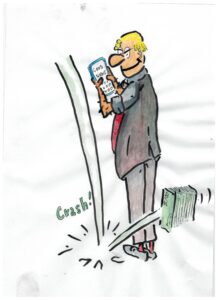Legal nature of a deposit
- 2015-10-11
- By whiggs
- Posted in Banking and Finance Law, Other
Paciocco v Australia and New Zealand Banking Group Limited [2014] FCA 35 (5 February 2014)
Para 93
- A savings or deposit account is in law a loan to the banker: Pearce v Creswick [1843] EngR 304; (1843) 2 Hare 286; Dixon v Bank of New South Wales [1896] NSWLawRp 103; (1896) 17 LR (NSW) Eq 355; Khan v Singh [1936] 2 All ER 545. The bank borrows the money and proceeds from the customer and undertakes to repay them on demand. The bank’s undertaking includes a promise to pay any part of the amount due against the written order of the customer addressed to the branch of the bank where the account is kept: Joachimson at [127]. Conversely, the bank will not pay any part of the amount due to the customer without such an order or some other compulsion or entitlement recognised by law;
See also Weaver GA and Craigie CR, The Law Relating to Banker and Customer in Australia, (Thompson Lawbook Co) at [2.140] (update 62).\
Citigroup Pty Limited v National Australia Bank Limited [2012] NSWCA 381 (4 December 2012)
Banker and customer
- The accepted analysis of the banker-customer relationship where the account is in credit casts the bank in the role of the customer’s debtor. Money notionally “in” the customer’s account is in truth money owned by the bank which is owed by it to the customer and payable on demand made by the customer by way of “withdrawal”: see, for example, Carr v Carr[1811] EngR 606; (1811) 1 Mer 541n; 35 ER 799; Devaynes v Noble (1816) 1 Mer 529; 35 ER 767; Foley v Hill
[1848] EngR 837
; (1848) 2 HL Cas 28;
9 ER 1002.
On this basis, the money paid by Citibank to NAB on 16 November 2010 was the property of Citibank and the money paid by NAB to the Hong Kong bank on 19 November 2010 was the property of NAB. The question arising between each bank and its customers was whether the payment by the bank justified a commensurate reduction in the debt owed by the bank to those customers. Because, on the facts as they are now accepted, each bank gave effect to a forged and false instruction and therefore acted outside the bank’s mandate and in breach of contract, no such reduction was warranted.
Commonwealth of Australia v The Official Trustee in Bankruptcy as Trustee of the Property of Stephen Vasil [2004] NSWSC 1155 (2 December 2004)
8 When a person (the Customer) opens a banking account with a trading bank, he or she enters into a contract with the Bank under which the money deposited by the Customer in his or her account becomes the property of the Bank and the relationship of debtor and creditor is created between banker and customer: Foley v Hill  [1848] EngR 837
[1848] EngR 837  ; (1848) 2 HLC 28;
; (1848) 2 HLC 28;  9 ER 1002
9 ER 1002  ; Croton v Reg [1967] HCA 48; (1967) 117 CLR 326 at 330.
; Croton v Reg [1967] HCA 48; (1967) 117 CLR 326 at 330.
Croton v R [1967] HCA 48; (1967) 117 CLR 326 (21 December 1967)
12. The subject matter of the instant charges was money, in each case expressed as a number of dollars, that is, paper money, or coin to the stated face value. That can be asported and be the subject of larceny. But, though in a popular sense it may be said that a depositor with a bank has “money in the bank”, in law he has but a chose in action, a right to recover from the bank the balance standing to his credit in account with the bank at the date of his demand, or the commencement of action. That recovery will be effected by an action for debt. But the money deposited becomes an asset of the bank which may use it as it pleases: see generally Nussbaum, Money in the Law: s. 8, p. 103. Neither the balance standing to the credit of the joint account in this case, nor any part of it, as it constituted no more than a chose in action in contradistinction to a chose in possession, was susceptible of larceny, though it might be the subject of misappropriation: see also on this point the judgment of Lord Goddard in Reg. v. Davenport (1954) 1 WLR 569;(1954) 1 All ER 602 with which I respectfully agree. (at p331)
SEARCH BLOG POSTS
LATEST BLOG POSTS
- Updated product safety mandatory reporting guidance for suppliers now available
- Pleading fraud – cause and effect is essential
- Does the Trustee’s right of indemnity have priority over the right of beneficiaries in relation to assets?
- Rules of war (in a nutshell) | The Laws Of War
- MH370 Final Report
Past Blog Posts
- December 2021
- September 2021
- August 2021
- May 2021
- April 2021
- March 2021
- August 2020
- February 2020
- September 2019
- February 2019
- December 2018
- July 2018
- April 2018
- December 2017
- May 2017
- February 2017
- December 2016
- November 2016
- October 2016
- September 2016
- August 2016
- April 2016
- March 2016
- October 2015
- September 2015
- August 2015
- May 2014
- April 2014
- March 2014
- January 2014
Categories
- Appeals
- Artificial Intelligence
- Aviation law
- Banking and Finance Law
- Blogs
- Civil Liability Act
- Class Actions
- Coding for lawyers
- common law
- Consumer Claims (TPA)
- Contract Law
- Contractual Interpretation
- Criminal law
- Deeds
- Docassemble
- duty of care
- Engineering Law
- Equity
- Evidence
- Exclusion Clauses
- Execution of documents
- Expert Witness
- featured
- Financial Services
- Fraud
- Fundraising (Chapter 6D)
- General comment
- Home Building Law
- Insurance
- Legal drafting
- Local Court
- Medical Negligence
- MH370
- Motor Accidents
- Negligence
- Occupiers negligence
- Other
- Personal Injury
- Personal Property Securities (PPSA)
- Pleading
- Practice & Procedure
- Products Liability
- Property
- Real Property
- Reasons for a decision
- Securitisation
- Security (Mortgages & Charges)
- Sentencing
- Swaps & Derivatives
- Teaching
- Transactional Law
- Transfer of financial assets in transactions
- Trusts & Trustee Law
- Uncategorized
- War and Weaponry
- Witnesses
SEARCH BLOG POSTS
LATEST BLOG POSTS
- Updated product safety mandatory reporting guidance for suppliers now available
- Pleading fraud – cause and effect is essential
- Does the Trustee’s right of indemnity have priority over the right of beneficiaries in relation to assets?
- Rules of war (in a nutshell) | The Laws Of War
- MH370 Final Report
Past Blog Posts
- December 2021
- September 2021
- August 2021
- May 2021
- April 2021
- March 2021
- August 2020
- February 2020
- September 2019
- February 2019
- December 2018
- July 2018
- April 2018
- December 2017
- May 2017
- February 2017
- December 2016
- November 2016
- October 2016
- September 2016
- August 2016
- April 2016
- March 2016
- October 2015
- September 2015
- August 2015
- May 2014
- April 2014
- March 2014
- January 2014
Categories
- Appeals
- Artificial Intelligence
- Aviation law
- Banking and Finance Law
- Blogs
- Civil Liability Act
- Class Actions
- Coding for lawyers
- common law
- Consumer Claims (TPA)
- Contract Law
- Contractual Interpretation
- Criminal law
- Deeds
- Docassemble
- duty of care
- Engineering Law
- Equity
- Evidence
- Exclusion Clauses
- Execution of documents
- Expert Witness
- featured
- Financial Services
- Fraud
- Fundraising (Chapter 6D)
- General comment
- Home Building Law
- Insurance
- Legal drafting
- Local Court
- Medical Negligence
- MH370
- Motor Accidents
- Negligence
- Occupiers negligence
- Other
- Personal Injury
- Personal Property Securities (PPSA)
- Pleading
- Practice & Procedure
- Products Liability
- Property
- Real Property
- Reasons for a decision
- Securitisation
- Security (Mortgages & Charges)
- Sentencing
- Swaps & Derivatives
- Teaching
- Transactional Law
- Transfer of financial assets in transactions
- Trusts & Trustee Law
- Uncategorized
- War and Weaponry
- Witnesses




